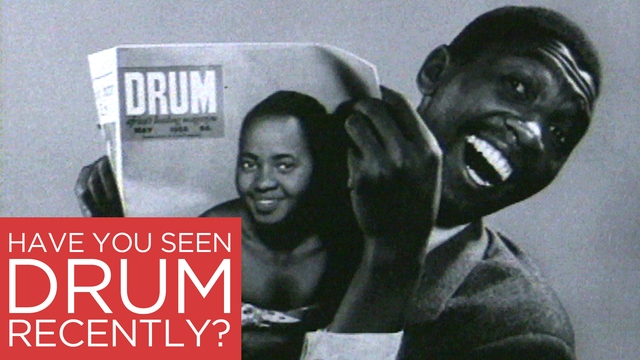Have You Seen Drum Recently?
The story of a black magazine in a white world
 'Drum' pulsated with music, life and culture; eye-popping images of black models jumped off its covers. It was a rallying point for black sophisticates as the anti-apartheid movement took shape. And it changed the face of black culture forever.
'Drum' pulsated with music, life and culture; eye-popping images of black models jumped off its covers. It was a rallying point for black sophisticates as the anti-apartheid movement took shape. And it changed the face of black culture forever.
Drum wasn't just a magazine, but a way of life. Its offices and pages were full of "oddballs, screwballs, ladies men, and ladies." With beautiful black women on its pages, and liberal articles in its columns, the magazine gave life to the attitudes of the 'rip-roaring fifties.' Having fun, enjoying life and making music was what it was all about.
In a land of discrimination 'Drum' was an escape. It was a "world within a world, a nest of craziness inside a loony apartheid landscape." But these intellectuals and their attitudes were a threat to the status quo. Here was black and white working side by side and the world of whites was beginning to take note and ask questions. "Colleagues working at all white papers would ask: 'Who is Nelson Mandela?' 'And who is this guy called Tombo?' And we'd explain."
Music, and its magazine both gave strength to the people of South Africa. The toe-tapping tunes "gave the workers muscles they didn't know they had", and the articles of intellectuals such as Lewis Nkosi, Can Themba and Henry Nxumalo gave a voice to the anti - Apartheid movement and a helping hand to Mandela and his compatriots.
Among the highlights of this one-of-a-kind documentary is footage giving us a view of the young Nelson Mandela and Oliver Tambo as they conduct political meetings and confrontations.
In a typical act of the apartheid regime, Sophiatown was eventually bulldozed into non-existence, since it could be classified as an "unauthorised settlement." 'Drum' magazine went with it, but its legacy lives on.
FULL SYNOPSIS





